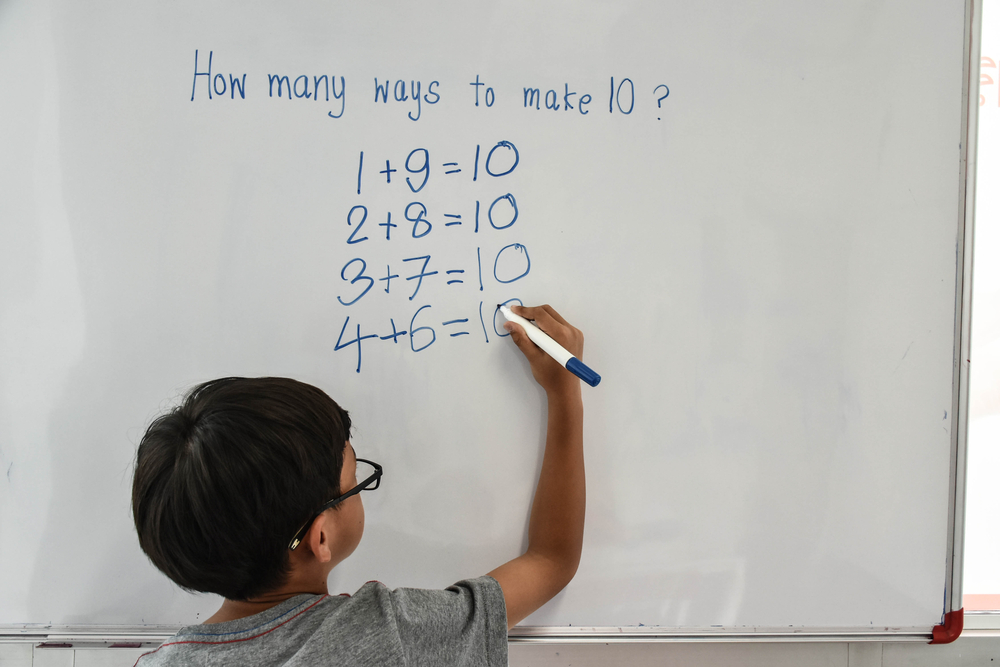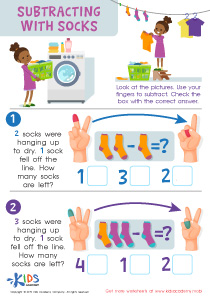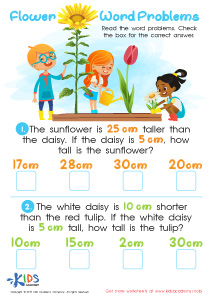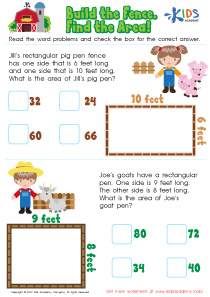Money Word Problems Worksheets for 4-Year-Olds
3 filtered results
-
From - To
Introduce your little ones to the basics of money management with our engaging Money Word Problems worksheets, designed specifically for homeschooled children aged four years old. These interactive worksheets blend fun with education, teaching children the fundamental concepts of money through simple, age-appropriate problems. Perfect for early learners, these worksheets help develop critical thinking and basic arithmetic skills in a lively, interactive format. Ideal for homeschooling parents, our Money Word Problems sheets offer a hands-on learning experience to spark young minds' interest in maths and finance. Start your child on the path to financial literacy today!
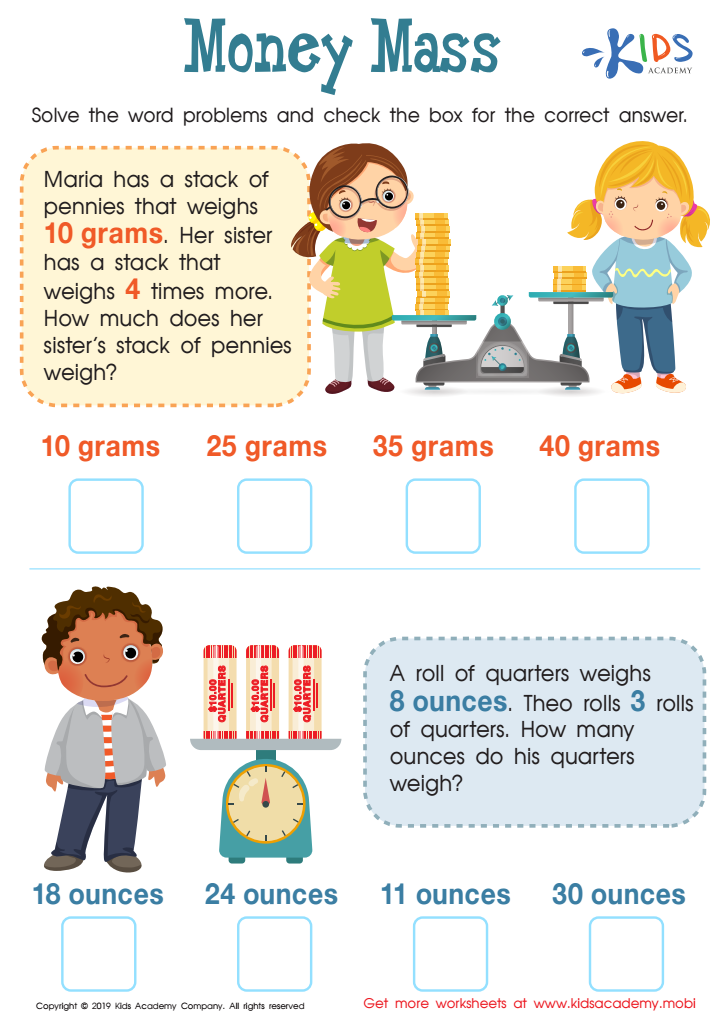

Money Mass Worksheet
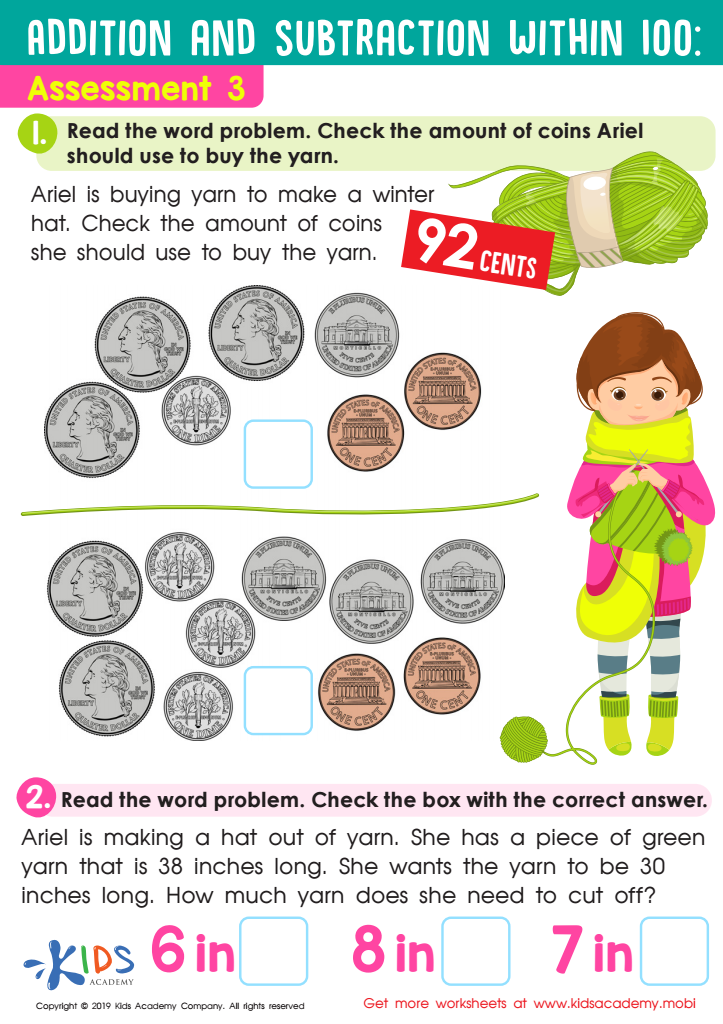

Assessment 3 Math Worksheet
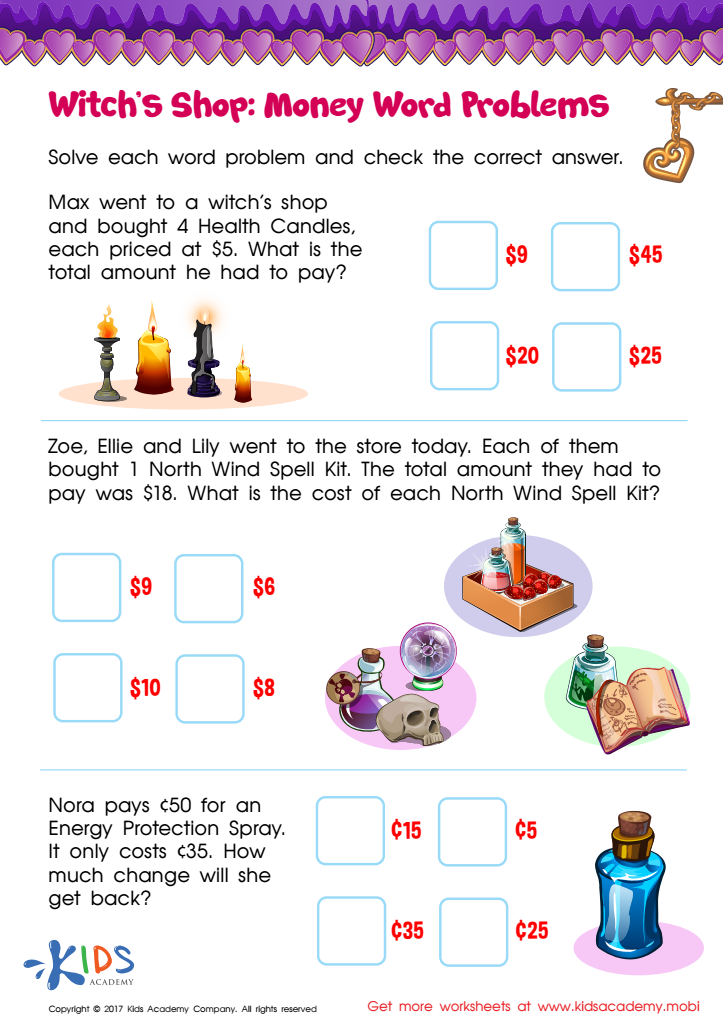

Money Word Problems Printable
The Value of Homeschool Interactive Printables: Focusing on Money Word Problems for Four-Year-Olds
In the foundational years of a child's education, introducing concepts such as money through engaging and age-appropriate methods can be a game changer. For four-year-olds, who are naturally curious and absorbent to new information, the use of homeschool interactive printables, especially focused on money word problems, offers a unique blend of learning and entertainment. These printables are not just tools; they are gateways to understanding basic mathematical concepts and real-world applications from an early age.
Why Focus on Money Word Problems?
Money is a universal medium of exchange and an essential part of daily life. Introducing young children to money through word problems can help them understand its value and function. At the tender age of four, children are beginning to recognize numbers and starting to understand the concept of counting. This makes it a perfect time to introduce simple money word problems that can help solidify these skills.
Money word problems help children make the connection between numbers and real-life contexts. A worksheet might ask, "If you have two coins, one worth 5 cents and another worth 10 cents, how much money do you have in total?" This encourages young learners to apply their counting skills in a practical scenario, enhancing both their arithmetic and cognitive abilities.
Enhancing Engagement Through Homeschool Interactive Printables
Homeschool interactive printables are specifically designed to capture the interest of young learners. These materials often include colorful images, fun themes, and characters that children can relate to. This age-appropriate engagement is crucial as it turns a learning session into a fun activity, rather than a mundane task. For four-year-olds, the playful aspect of these printables can significantly enhance their willingness and enthusiasm to engage with the content.
Moreover, interactive printables often incorporate elements that require manipulation, such as cutting out money shapes or using stickers to answer questions. These activities help in developing fine motor skills and hand-eye coordination. They also keep the learning dynamic and physically engaging, which is suitable for children who naturally tend to learn through doing.
Building a Strong Foundation with Practical Knowledge
The early introduction of money concepts through word problems can lay a strong foundation for more complex mathematical and financial concepts later in life. By using homeschool interactive printables focused on money word problems, parents and educators can help children not only learn how to count but also start understanding saving, spending, and the worth of different denominals inations. This early financial literacy is an invaluable component of a child's overall education, giving them a head start in navigating the financial aspects of their future lives.
Customizable Learning Experiences
One of the significant advantages of homeschool interactive printables is their adaptability. They can be customized to fit the learning pace and interest of each child. For instance, if a child shows an increased interest in coins over notes, the printables can be adjusted to feature more coin-related problems. This personalization helps in catering to the individual needs of a child, making learning a more enjoyable and effective experience.
Furthermore, these printables can be used repeatedly. A child can color, mark, or sticker a printable multiple times, which reinforces learning through repetition. This repeated exposure helps in deepening their understanding and recall of the concepts being taught.
Social Skills and Financial Awareness
While primarily educational, working on money word problems also subtly boosts a child's social skills. These problems often pose scenarios involving buying and selling, prompting children to think about transactions in social settings—like buying a snack or a toy. This can also be a platform for parents to introduce basic concepts of fairness, exchange, and the value of goods and services.
Additionally, engaging with money through interactive printables can make children aware of financial decision-making from an early age. It introduces them to the idea that money is finite and needs to be managed wisely.
Conclusion
Incorporating money word problems through homeschool interactive printables into the education of a four-year-old is more than just about teaching them to count money. It’s about laying a comprehensive groundwork for numerical proficiency, practical life skills, and financial awareness. These printables ensure that learning about money is an interactive, engaging, and highly educational process. They offer a hands-on approach to education that appeals to young learners, ensuring that the foundational concepts of money and arithmetic are built solidly and enjoyably. As such, they are essential tools in the educational toolkit of any parent or educator aiming to equip their children with early life skills and knowledge.

 Assign to the classroom
Assign to the classroom


